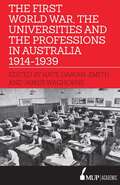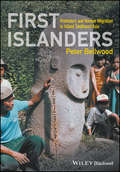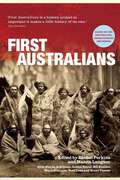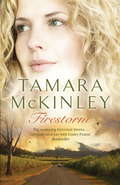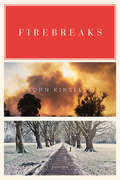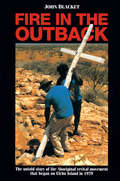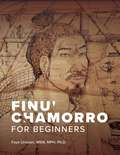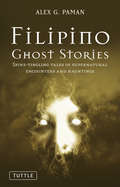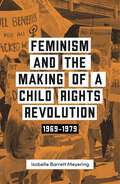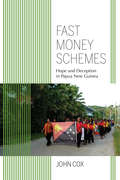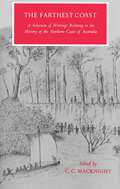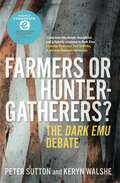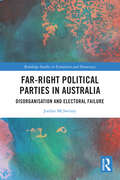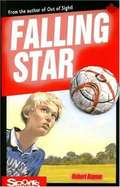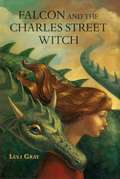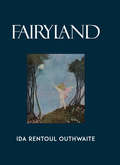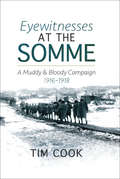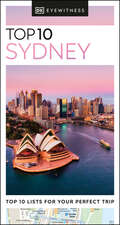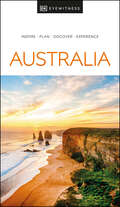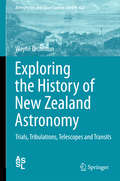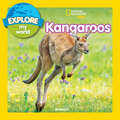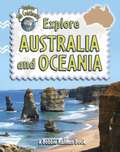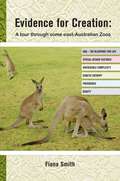- Table View
- List View
First and Foremost: A Concise Illustrated History of 1st Battalion, the Royal Australian Regiment, 1945 - 2018
by Bob BreenThis history has been published to mark 70 years of service as well as the 50th Anniversary of the battle of Coral/Balmoral in Vietnam in 1968, the 25th Anniversary of service in Somalia in 1993 and the 10th anniversary of service in Afghanistan in 2008/09. It covers only the ‘wave tops’ of 70 years of history and mentions only a few individuals, mostly commanding officers or contingent commanders who had ultimate responsibility for operational success or failure; thus, deserving their prominence. Photographs and tables do their best to enhance the narrative in the expectation of, ‘A picture is worth a 1000 words’. By measures of its operational record, The 1st Battalion, The Royal Australian Regiment is one of the first and foremost battalions of the Royal Australian Regiment.
First World War, the Universities and the Professions in Australia 1914-1939
by Kate Darian-Smith James WaghorneAustralia's extraordinary contribution to World War I extended well beyond its military forces to the expertise of its universities and professional men and women. Scientists and engineers oversaw the manufacture of munitions and the development of chemical weapons. Doctors sustained soldiers in the trenches, and treated the physically and psychologically damaged. Public servants, lawyers and translators were employed in the war bureaucracy, while artists and writers found new modes to convey the trauma of war. The graduates and staff of Australia's six universities—Sydney, Melbourne, Adelaide, Tasmania, Queensland and Western Australia and Queensland—were involved in this expansion of expertise. But what did these men and women do after the guns were silenced? How were the professions and universities transformed by the immediate and longer-term impacts of the war? The First World War, the Universities and the Professions examines how the technical and conceptual advances that occurred during World War I transformed Australian society. It traces the evolving role of universities and their graduates in the 1920s and 1930s, the increasing government validation of research, the expansion of the public service, and the rise of modern professional associations and international networks. While the war contributed to greater specialisations in traditional professions such as teaching or medicine, it also stimulated new jobs and training—whether in economics, anthropology or graphic art. This volume provides a new account of the interwar years that places knowledge and expertise at the heart of the Australian story. Its four sections—The Medical Sciences; Science and Technology; Humanities, Social Sciences and Teaching; and The Arts: Design, Music and Writing—highlight how World War I disrupted and shaped the careers of individuals as well as the development of Australian society and institutions.
First Islanders: Prehistory and Human Migration in Island Southeast Asia
by Peter BellwoodIncorporating research findings over the last twenty years, First Islanders examines the human prehistory of Island Southeast Asia. This fascinating story is explored from a broad swathe of multidisciplinary perspectives and pays close attention to migration in the period dating from 1.5 million years ago to the development of Indic kingdoms late in the first millennium CE.
First Australians
by Rachel Perkins Marcia LangtonFirst Australians is the dramatic story of the collision of two worlds that created contemporary Australia. Told from the perspective of Australia's first people, it vividly brings to life the events that unfolded when the oldest living culture in the world was overrun by the world's greatest empire.Seven of Australia's leading historians reveal the true stories of individuals-both black and white-caught in an epic drama of friendship, revenge, loss and victory in Australia's most transformative period of history.Their story begins in 1788 in Warrane, now known as Sydney, with the friendship between an Englishman, Governor Phillip, and the kidnapped warrior Bennelong. It ends in 1992 with Koiki Mabo's legal challenge to the foundation of Australia.By illuminating a handful of extraordinary lives spanning two centuries, First Australians reveals, through their eyes, the events that shaped a new nation. Note: This is the unillustrated version ofFirst Australians.
Firestorm
by Tamara McKinleyIf you love Lesley Pearse, you're sure to fall for Tamara McKinley. A tale of hardship, hidden identities and our shared struggle to survive. Becky Jackson's family has been managing the hospital in far-flung Morgan's Reach for three generations. When Becky's husband is tragically lost at war, she and her young son Danny must leave the city and return to her birthplace to start over. But for all its charm, Morgan's Reach is a divided community, where blood is thicker than water and grudges run deep. So when a mysterious stranger appears outside the town and Danny begins to act strangely, it is not only Becky's newfound stability that's threatened. And what of the fact that there's not been a drop of rain in over three years? The risk of wildfire looms large and the hospital is already pushed to breaking point. A single spark could level the area in minutes - burning away everything for which the town has worked so hard; exposing the secrets they've fought to keep so close.
Firestorm
by Tamara MckinleyIf you love Lesley Pearse, you're sure to fall for Tamara McKinley. A tale of hardship, hidden identities and our shared struggle to survive. Becky Jackson's family has been managing the hospital in far-flung Morgan's Reach for three generations. When Becky's husband is tragically lost at war, she and her young son Danny must leave the city and return to her birthplace to start over. But for all its charm, Morgan's Reach is a divided community, where blood is thicker than water and grudges run deep. So when a mysterious stranger appears outside the town and Danny begins to act strangely, it is not only Becky's newfound stability that's threatened. And what of the fact that there's not been a drop of rain in over three years? The risk of wildfire looms large and the hospital is already pushed to breaking point. A single spark could level the area in minutes - burning away everything for which the town has worked so hard; exposing the secrets they've fought to keep so close.
Firebreaks: Poems
by John KinsellaA follow-up to the critically acclaimed Jam Tree Gully, Firebreaks records life and ecology in Western Australia. Known for a poetry both experimental, “activist,” and lyrical that reinvents the pastoral, John Kinsella considers his and his family’s life at Jam Tree Gully, in the Western Australian wheatbelt, and his deeply felt ecological concerns in this new cycle of poems about place, landscape, home, and absence. Part One, “Internal Exile,” explores issues of departure and return as well as alienation in Jam Tree Gully. Part Two, “Inside Out,” reevaluates how Kinsella and his family deal with ideas of “space” and proximity while also looking out into the wider world. How do we read an ecology as refuge? What lines of communication with the outside world need to be kept open? As Paul Kane observed in World Literature Today, “In Kinsella’s poetry . . . are lands marked by isolation and mundane violence and by a terrible transcendent beauty.”
Fire in the Outback: The untold story of the Aboriginal revival movement that began on Elcho Island in 1979
by John Blacket'A real classic''Every Australian believer should read this book''Australian Aborigines are the most evangelised people in the world with the least developed Christian growth' [Ron Williams, Aboriginal pastor and elder] God took the outcasts - rejected and despised Australian Aborigines - and transformed whole communities in a few days, first on an island in north Australia, and later across the north, centre, west and east of Australia. This fire of revival transformed health, hygiene, attitude to work and education, and brought true reconciliation and love between families, clans and tribes that had been fighting for many generations. Fire in the Outback is the Aborigines' own stories of what happened. It is a very frank, exciting and balanced presentation that challenges our own lives as it looks at the roots, background and results of a revival that points the way for the future. This is the story of real community transformation that produced many of the next generation of indigenous leaders and prepared the way for Australia's first peoples to take their God-given role in real leadership in one of the most multi-cultural nations on earth.
Finu' Chamorro for Beginners
by Faye Untalan MSW, MPH, Ph.DFinu' Chamorro for Beginners offers comprehensive and practical lessons and language drills for anyone interested in becoming more confident and proficient in speaking the Chamorro language. Students of all levels will enjoy its easy-to-follow lesson plans on pronouns, sentence structure, verbs, and vocabulary. Content and lessons go beyond language and orthography rules to present the learner with insight into the Chamorro people’s rich traditions. The publication serves both as a textbook for two college-level semesters of beginning Chamorro language instruction and as a workbook with activities intended to help students develop their ability to read, write, and speak in Chamorro.
Filipino Ghost Stories
by Alex G. PamanGhost stories are commonplace in traditional Filipino culture, with virtually every family having their own personal accounts of encounters with the supernatural. Passed on from generation to generation, these tales act as a bridge to the past, to a time lost or nearly forgotten.Full of ghostly encounters with all manner of things eerie and terrifying in the Philippines, Filipino Ghost Stories is a collection of creepy tales that have been told in the author's family for generations. The book delivers terrific entertainment--and some good chills--for those interested in the Philippines and aficionados of the supernatural alike.
Feminism and the Making of a Child Rights Revolution: 1969–1979
by Isobelle Barrett MeyeringWhen Australian women's liberationists challenged prevailing expectations of female domesticity, they were accused of being anti-mother and anti-child. Feminism and the Making of a Child Rights Revolution provides a much-needed reassessment of this stereotype. Drawing on extensive archival research and personal accounts, it places feminists at the forefront of a new wave of children's rights activism that went beyond calls for basic protections for children, instead demanding their liberation. Historian Isobelle Barrett Meyering revisits this revolutionary approach and charts the debates it sparked within the women's movement. Her examination of feminists' ground-breaking campaigns on major social issues of the 1970s-from childcare to sex education to family violence-also reveals women's concerted efforts to apply this ideal in their personal lives and to support children's own activism. Feminism and the Making of a Child Rights Revolution sheds light on the movement's expansive vision for social change and its lasting impact on the way we view the rights of women and children.
Fast Money Schemes: Hope and Deception in Papua New Guinea (Framing the Global)
by John CoxIn the late 1990s and early 2000s a wave of Ponzi schemes swept through Papua New Guinea, Australia, and the Solomon Islands. The most notorious scheme, U-Vistract, attracted many thousands of investors, enticing them with promises of 100 percent interest to be paid monthly. Its founder, Noah Musingku, was a charismatic leader who promoted the scheme as a form of Christian mission and as the basis for establishing an independent kingdom. Fast Money Schemes uses in-depth interviews with investors, newspaper accounts, and participant observation to understand the scheme's appeal from the point of view of those who invested and lost, showing that organizers and investors alike understood the scheme as a way of accessing and participating in a global economy. John Cox delivers a "post-village" ethnography that gives insight into the lives of urban, middle-class Papua New Guineans, a group that is not familiar to US readers and that has seldom been a focus of anthropological interest. The book's concern with understanding the interweaving of morality, finance, and aspirations shared by a global cosmopolitan middle class has wide resonance beyond studies of Papua New Guinea and anthropology.
Farthest Coast: A Selection of Writings Relating to the History of the Northern Coast of Australia
by Campbell MacknightNorthern Australia was once one the most remote areas of the world. To all its early visitors—Macassan fishermen, white explorers, soldiers, government officials, settlers and missionaries—it was their farthest coast. For all it was an alien and difficult place to reach.Campbell Macknight outlines the history of the exploration and settlement of the coast from the Gulf of Carpentaria west to the Kimberleys in his introduction. He suggest it is a geographical unit very different from the rest of Australia.His selections from the writings of early visitors are exciting and interesting for their own sakes, and an invaluable guide to a region of growing economic and strategic importance.
Farmers or Hunter-gatherers?: The Dark Emu Debate
by Peter Sutton Keryn WalsheAustralians' understanding of Aboriginal society prior to the British invasion from 1788 has been transformed since the publication of Bruce Pascoe's Dark Emu in 2014. It argued that classical Aboriginal society was more sophisticated than Australians had been led to believe because it resembled more closely the farming communities of Europe. In Farmers or Hunter-gatherers? Peter Sutton and Keryn Walshe ask why Australians have been so receptive to the notion that farming represents an advance from hunting and gathering. Drawing on the knowledge of Aboriginal elders, previously not included within this discussion, and decades of anthropological scholarship, Sutton and Walshe provide extensive evidence to support their argument that classical Aboriginal society was a hunter-gatherer society and as sophisticated as the traditional European farming methods. Farmers or Hunter-gatherers? asks Australians to develop a deeper understanding and appreciation of Aboriginal society and culture.
Far-Right Political Parties in Australia: Disorganisation and Electoral Failure (Routledge Studies in Extremism and Democracy)
by Jordan McSwineyThis book examines how Australian far-right parties organise and operate to better understand their limited electoral success. Australian far-right parties have yet to see results comparable to far-right parties in other contexts. Unlike many of their European counterparts that have made significant electoral gains up to and including participation in national governments, the Australian far-right parties of the ‘fourth wave’ have experienced relatively poor electoral results. But this does not necessarily mean that Australia is uniquely hostile to far-right politics. Focusing particularly on the 2019 Australian federal election, this book takes an organisational approach to better understand why Australian far-right parties struggle electorally. Through the novel lens of disorganised parties, the author argues that the failure to develop a functioning party organisation has resulted in Australian far-right parties being unable to effectively navigate their political environment. By focusing on disorganisation, this book provides a new perspective for understanding the limited electoral impact of the far right in Australia today, despite favourable conditions like normalised Islamophobia and growing dissatisfaction with mainstream parties. This book will be of interest to scholars and students of party politics, the far right, populism, and Australian politics.
Falling Star
by Robert RaynerThe Brunswick Valley kids are back, and this time they're taking it on the road. In order to secure the top spot in the league, the gang is playing a series of away-games at schools around the province. With their teenage coach, Ice, at the wheel of the van, victory, hilarity, and complications are sure to follow!
Falcon and the Charles Street Witch (Falcon's Egg #2)
by Luli GraySince Egg flew off into the night more than a year before, Falcon fears she will never see her dragon again. Her mother wants to forget that Egg ever existed and her father never believed in dragons at all. But the magic finds Falcon again. First she leaps out of a plane after her younger brother, Toody. Then, blown to safety on a current of dragon's breath, Falcon lands in an enchanted garden on Charles Street in New York City where she is greeted by the wonderfully peculiar Blinda Cholmondely. With the help of an ancient doggerel-spouting dragon named Dirus Horribilus, the rakish Saint George, and the astonishing Charles Street Witch, Falcon sets out to rescue Toody. In this rollicking tale of adventure and surprise, not only will Falcon see her beloved Egg again, she will also discover her own extraordinarily courageous self.
Fairyland
by Annie R. Rentoul Grenbry Outhwaite Ida Rentoul OuthwaiteA highly sought-after collectible, Fairyland features the exquisite illustrations of Ida Rentoul Outhwaite, a noted artist of the early 20th century. Outhwaite excelled at the depiction of dainty sprites, and her whimsical visions are highlighted by images of kangaroos, koalas, kookaburras, and other creatures of her native Australia. Her art -- with accompanying verses by her sister, Annie R. Rentoul, and stories by her husband, Grenbry Outhwaite --is populated by princesses, witches, pixies, and other folkloric creatures and abounds in timeless charm. This hardcover edition of Outhwaite's most lavish work features dozens of graceful and imaginative illustrations, including nineteen in full color.
Eyewitnesses at the Somme: A Muddy and Bloody Campaign, 1916–1918
by Tim CookIn 1915, news of the Australian and New Zealand Army Corps landing and the slaughter at Gallipoli stirred tens of thousands of young men to go to war.They answered the call and formed battalions of the Australian Imperial Force. By the time the new recruits were combat ready, the campaign at Gallipoli had ended. Their battlefields became the muddy paddocks of France and Belgium.Based on eyewitness account, Eyewitnesses at the Somme traces the story of one of these battalions, the 55th, from its birth in the dusty camps of Egypt through three years of brutal, bloody conflict on the bitter western front.When the Great War ended in 1918, over 500 of the 3,000 men who served in the 55th had been slain and another 1,000 wounded. Eyewitnesses at the Somme, shares personal stories of Australian men as they stared down the horrors of war with determination, courage and comradeship. With chapters devoted to the significant battles at Fromelles, Doignies, Polygon Wood, Pronne and Bellicourt, this book tells the story of one battalion, but in doing so it encapsulates the experiences of many Australians on the Western Front.
Eyewitness Top 10 Sydney (Pocket Travel Guide)
by DK EyewitnessOverlooking one of the world&’s most spectacular harbours, Sydney is blessed with ocean beaches, lush tropical gardens, and a balmy climate that makes the great outdoors irresistible.Make the most of your trip to this dazzling city with DK Eyewitness Top 10. Planning is a breeze with our simple lists of ten, covering the very best that Sydney has to offer and ensuring that you don&’t miss a thing. Best of all, the pocket-friendly format is light and easily portable; the perfect companion while out and about. DK Eyewitness Top 10 Sydney is your ticket to the trip of a lifetime. Inside DK Eyewitness Top 10 Sydney you will find: - Top 10 lists of Sydney&’s must-sees, including Sydney Opera House, Art Gallery NSW, Darling Harbour and Bondi Beach- Sydney&’s' most interesting areas, with the best places for sightseeing, food and drink, and shopping- Themed lists, including the best beaches, museums, art galleries, parks and gardens and much more- Easy-to-follow itineraries, perfect for a day trip, a weekend, or a week- A laminated pull-out map of Sydney, plus eight full-color area mapsLooking for more on Australia&’s culture, history and attractions? Try our DK Eyewitness Australia.About DK Eyewitness: At DK Eyewitness, we believe in the power of discovery. We make it easy for you to explore your dream destinations. DK Eyewitness travel guides have been helping travellers to make the most of their breaks since 1993. DK Eyewitness travel guides have been helping travelers to make the most of their breaks since 1993. Filled with expert advice, striking photography and detailed illustrations, our highly visual DK Eyewitness guides will get you closer to your next adventure. We publish guides to more than 200 destinations, from pocket-sized city guides to comprehensive country guides. Named Top Guidebook Series at the 2020 Wanderlust Reader Travel Awards, we know that wherever you go next, your DK Eyewitness travel guides are the perfect companion.
Eyewitness Australia (Travel Guide)
by DK EyewitnessWhether you want to enjoy a spectacular sunrise at Uluru-Kata Tjuta National Park, sip craft beer in one of Melbourne&’s many hidden bars or drive along the epic Great Ocean Road, your DK Eyewitness travel guide makes sure you experience all that Australia has to offer.Australia's scintillating cities are home to world-class galleries, burgeoning foodie scenes and a lively nightlife. Beyond the urban landscape lie some of the most diverse natural wonders on earth. From the sun, sand and surf of Australia&’s 10,000 beaches and tropical islands to the World Heritage-listed rainforests, underwater coral gardens and hauntingly beautiful arid interior – this epic landscape never fails to mesmerize and surprise.Our updated guide brings Australia to life, transporting you there like no other travel guide does with expert-led insights, trusted travel advice, detailed breakdowns of all the must-see sights, photographs on practically every page, and our hand-drawn illustrations which place you inside the country's iconic buildings and neighborhoods. We&’ve also worked hard to make sure our information is as up-to-date as possible following the COVID-19 outbreak. DK Eyewitness Australia is your ticket to the trip of a lifetime. Inside DK Eyewitness Australia you will find: - A fully-illustrated top experiences guide: our expert pick of Australia&’s must-sees and hidden gems- Accessible itineraries to make the most out of each and every day- Expert advice: honest recommendations for getting around safely, when to visit each sight, what to do before you visit, and how to save time and money- Color-coded chapters to every part of Australia, from Queensland to New South Wales, Tasmania to Victoria- Practical tips: the best places to eat, drink, shop and stay- Detailed maps and walks to help you navigate the country easily and confidently - Covers: Sydney, New South Wales, Canberra and Australian Capital, Territory, Victoria Tasmania, South Australia, Queensland, Northern Territory, Western AustraliaOnly visiting Sydney? Look out for DK Eyewitness Sydney or the pocket-sized Top 10 Sydney.About DK Eyewitness: At DK Eyewitness, we believe in the power of discovery. We make it easy for you to explore your dream destinations. DK Eyewitness travel guides have been helping travellers to make the most of their breaks since 1993. Filled with expert advice, striking photography and detailed illustrations, our highly visual DK Eyewitness guides will get you closer to your next adventure. We publish guides to more than 200 destinations, from pocket-sized city guides to comprehensive country guides. Named Top Guidebook Series at the 2020 Wanderlust Reader Travel Awards, we know that wherever you go next, your DK Eyewitness travel guides are the perfect companion.
Exploring the History of New Zealand Astronomy
by Wayne OrchistonDr. Orchiston is a foremost authority on the subject of New Zealand astronomy, and here are the collected papers of his fruitful studies in this area, including both those published many years ago and new material. The papers herein review traditional Maori astronomy, examine the appearance of nautical astronomy practiced by Cook and his astronomers on their various stopovers in New Zealand during their three voyagers to the South Seas, and also explore notable nineteenth century New Zealand observatories historically, from significant telescopes now located in New Zealand to local and international observations made during the 1874 and 1882 transits of Venus and the nineteenth and twentieth century preoccupation of New Zealand amateur astronomers with comets and meteors. New Zealand astronomy has a truly rich history, extending from the Maori civilization in pre-European times through to the years when explorers and navigators discovered the region, up to pioneering research on the newly emerging field of radio astronomy during WWII and in the immediate post-war years. A complete survey of a neglected but rich national astronomical history, this does the subject full and comprehensive justice.
Explore My World: Kangaroos (Explore My World)
by Jill EsbaumIn this colorful, photo-packed picture book for preschoolers, curious kids learn all about kangaroos and watch a kangaroo joey as it grows from a tiny baby in its mother's pouch into a big, fast-hopping marsupial.Readers learn all about these marvelous marsupials, including where they live in Australia, what they eat, and how they communicate, play, and grow. Kids will meet red kangaroos, gray kangaroos, tree kangaroos, rat kangaroos, and other members of the kangaroo family. A habitat map shows where kangaroos live. These engaging Explore My World picture books, on subjects kids care about, combine simple stories with unforgettable photography. They invite little kids to take their first big steps toward understanding the world around them and are just the thing for parents and kids to curl up with and read aloud.
Explore Australia and Oceania
by Bobbie Kalman Rebecca SjongerExplore Australia and Oceania leads children on an exciting trip through Australia's beautiful and diverse landscapes. Considered both a country and a continent, amazing full-color photographs feature the Great Barrier Reef, the rugged Outback, and Australia's interesting and unique animals.
Evidence for Creation
by Fiona SmithThis book focuses on specific design features of many Australian, and other, animals as well as other evidence for intentional creation by a Creator.It is intended as an aid when visiting east-Australian zoos, as well as a study manual for biology students, at a level of academic rigour expected in high school (or above) science.With its clear apologetic for creation, it is meant as a counter to the plethora of academic biology books and documentaries that extol evolution by random chance and time. In the book, the reader will be introduced to many standard biological terms used at the middle and upper high school level. These have all been well defined. There is also a Glossary at the back to help revise any new terms. The book is sectioned by animals (in alphabetical order) and apologetics. At the end of each section there are Review Questions to re-enforce learning for the student or enquiring adult. Answers to these appear at the back. The book also contains many colour photographs of the animals described.

